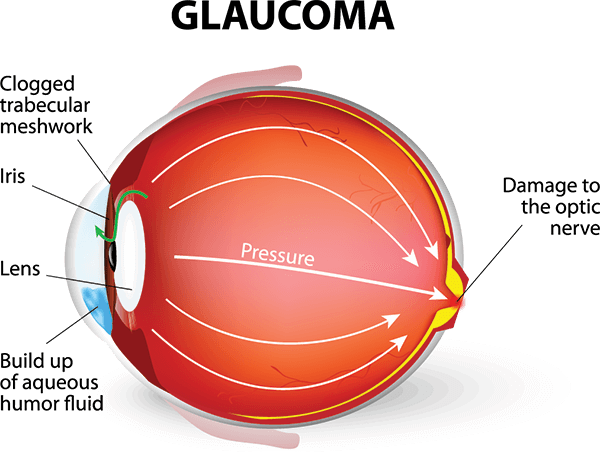Regional Glaucoma Service Near Me: Early Discovery and Treatment Choices
Wiki Article
Understanding the Different Vision Adjustment Procedures Available for Clearer View
In the world of vision improvement procedures, a wide range of choices exist to address refractive errors and provide people with more clear sight. From the extensively acknowledged LASIK surgical procedure to much less intrusive treatments like PRK and implantable lenses, the area of ophthalmology provides a variety of methods customized to fit various demands and choices. Each treatment comes with its very own set of considerations, benefits, and possible threats. Understanding the nuances of these vision modification techniques is essential for making educated choices regarding one's aesthetic health. Let's check out the details of these treatments and dropped light on the course to accomplishing enhanced vision clearness.LASIK Surgery
LASIK surgical treatment is a typical refractive procedure used to deal with vision troubles such as astigmatism, farsightedness, and nearsightedness. This medical strategy, which stands for Laser-Assisted in Situ Keratomileusis, aims to reshape the cornea to boost exactly how light is focused on the retina, inevitably enhancing vision clarity.Among the main benefits of LASIK surgical treatment is the rapid improvement in vision experienced by clients. Many individuals see a considerable enhancement in their vision right away after the treatment. In addition, most patients report marginal discomfort and pain throughout the surgery and healing period. The recuperation time for LASIK is reasonably quick, with numerous individuals returning to their day-to-day activities within a day or 2 post-operation. Overall, LASIK surgical treatment is a preferred option for individuals looking for a long-term service for their vision problems.
PRK Treatment
While additionally a typical refractive procedure, the PRK (Photorefractive Keratectomy) technique varies from LASIK surgical procedure in its method to correcting vision troubles. In PRK, as opposed to creating a flap on the cornea, the external layer of the cornea, called the epithelium, is entirely eliminated. This permits the laser to reshape the cornea to fix refractive errors such as nearsightedness, astigmatism, and farsightedness straight on the surface.
In spite of the longer healing time, PRK can produce outstanding cause vision improvement, making it a beneficial alternative for those who might not be appropriate prospects for LASIK surgery.
Implantable Lenses
Unlike PRK where the cornea is reshaped directly, implantable lenses use an additional approach for correcting vision by putting artificial lenses inside the eye. This treatment is especially advantageous for people with high degrees of nearsightedness, astigmatism, or farsightedness who may not be suitable candidates for laser surgeries like LASIK or PRK.
Implantable lenses, also called phakic intraocular lenses, work by supplementing the eye's all-natural lens with an artificial one. refractive surgeries in al. These lenses can discover this info here be put in front of the all-natural lens (anterior chamber) or behind the iris and before the natural lens (posterior chamber) By adjusting the power and positioning of these lenses, ophthalmologists can successfully remedy refractive mistakes and enhance aesthetic acuity
One benefit of implantable lenses is that they are exchangeable and removable, offering flexibility for future adjustments. However, just like any operation, there are threats involved, such as infection or cataract formation. People taking into consideration implantable lenses must speak with an eye care specialist to establish one of find out the most ideal option based upon their individual demands and eye health.
Corneal Rings
Corneal rings, likewise referred to as intracorneal ring sections, are small, transparent gadgets put right into the cornea to remedy vision distortions such as keratoconus. Keratoconus is a problem where the cornea thins and protrudes outward, creating vision to become distorted. The insertion of corneal rings aids to flatten the cornea, boosting aesthetic skill and minimizing the uneven astigmatism triggered by keratoconus.The procedure for inserting corneal rings is relatively fast and minimally intrusive, often executed as an outpatient treatment. Throughout the surgical procedure, the eye doctor makes a tiny laceration in the cornea and inserts the rings at a certain depth. Once in place, the rings aid to improve the cornea, providing a smoother surface for light to go into the eye, which can lead to clearer vision.
Corneal rings are taken into consideration a reversible treatment, as they can be eliminated or changed if needed. eyecare near me. While they may not entirely eliminate the need for glasses or get in touch with lenses, corneal rings can considerably improve vision find out high quality and general visual comfort for people with keratoconus or various other corneal irregularities
Refractive Lens Exchange
Following the adjustment of corneal abnormalities with treatments like corneal rings, another vision modification strategy that can resolve refractive mistakes is Refractive Lens Exchange (RLE) RLE is a surgery that includes replacing the eye's natural lens with an artificial intraocular lens (IOL) to remedy refractive errors such as farsightedness, nearsightedness, and presbyopia. This treatment is specifically helpful for individuals who may not appropriate prospects for procedures like LASIK or PRK due to elements such as thin corneas or high refractive errors.:max_bytes(150000):strip_icc()/Glaucoma-overview-3421722_final-6a69af8338584e2ab11102d00ca1ad11.jpg)
Final Thought
In conclusion, there are different vision correction treatments readily available to help people accomplish clearer sight. LASIK surgical treatment, PRK treatment, implantable lenses, corneal rings, and refractive lens exchange are all alternatives that can attend to different vision issues.In the world of vision modification procedures, a multitude of choices exist to deal with refractive mistakes and give individuals with more clear view.LASIK surgery is a common refractive procedure made use of to remedy vision problems such as farsightedness, astigmatism, and nearsightedness.While also an usual refractive procedure, the PRK (Photorefractive Keratectomy) technique differs from LASIK surgical procedure in its technique to correcting vision troubles.Following the improvement of corneal abnormalities with procedures like corneal rings, another vision adjustment strategy that can address refractive errors is Refractive Lens Exchange (RLE) LASIK surgery, PRK procedure, implantable lenses, corneal rings, and refractive lens exchange are all alternatives that can resolve various vision problems.
Report this wiki page